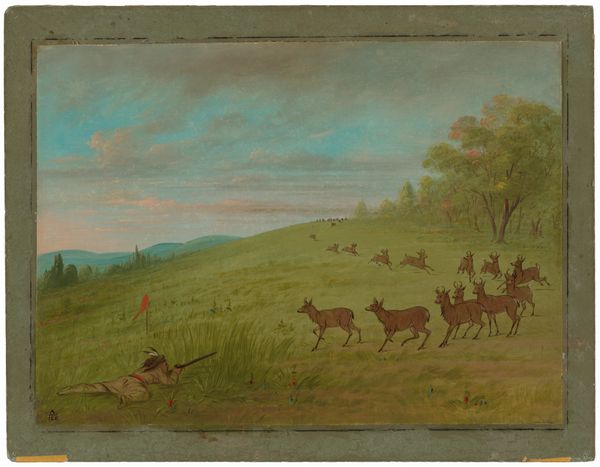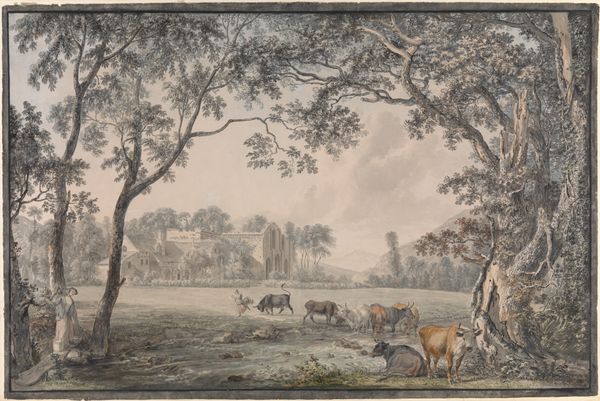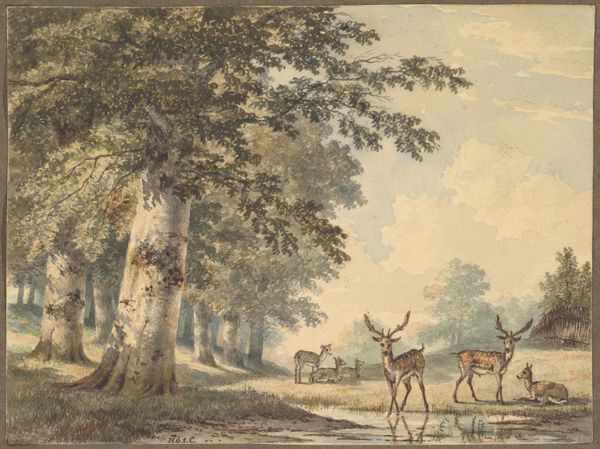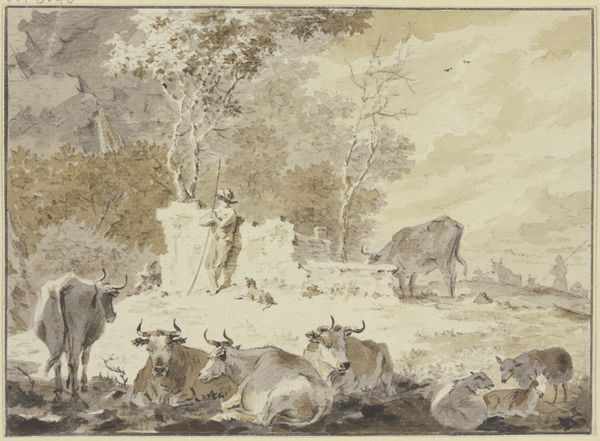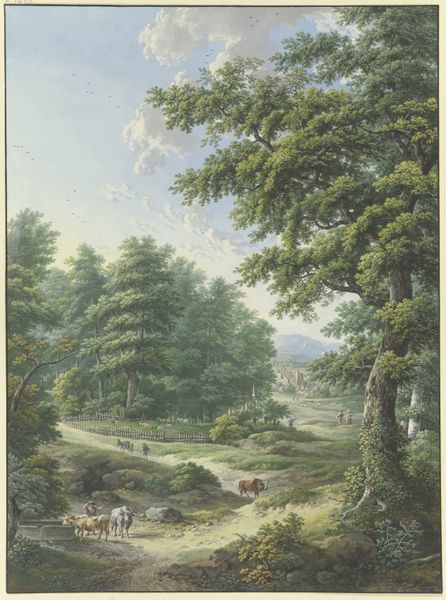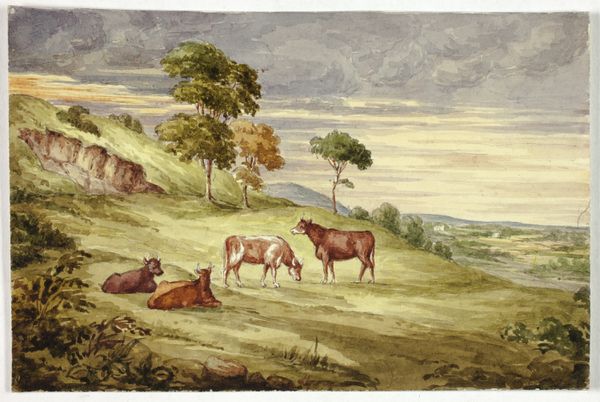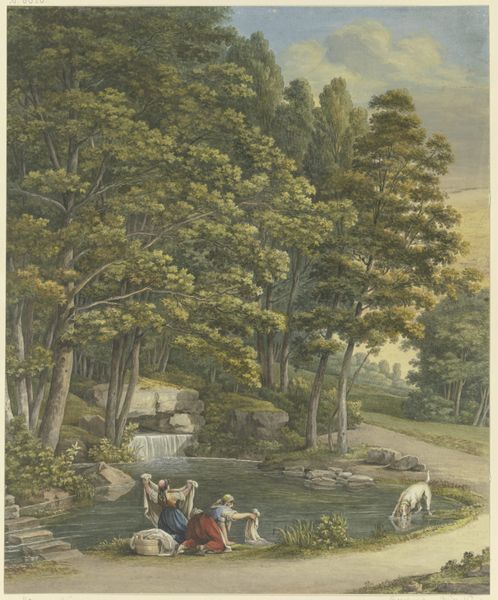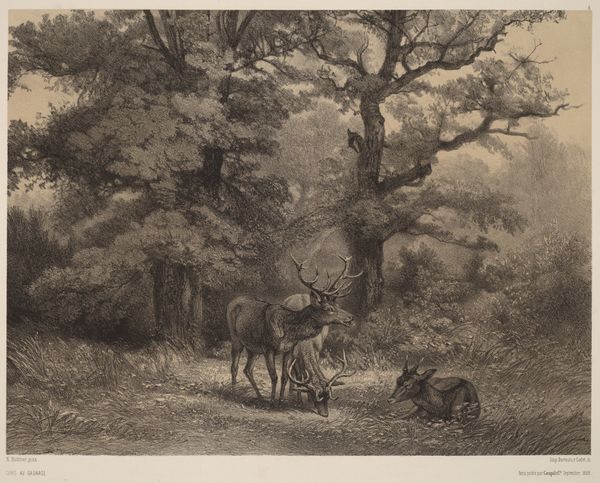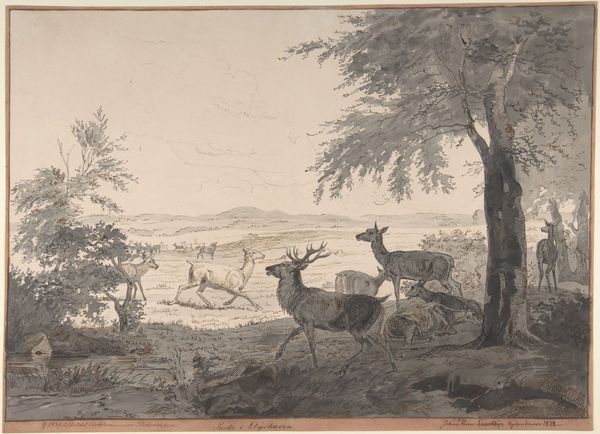
painting, oil-paint
#
painting
#
oil-paint
#
nature
#
romanticism
#
greenery
#
watercolour illustration
#
indigenous-americas
Dimensions: 12 1/16 x 17 3/4 in. (30.64 x 45.09 cm) (image, sheet)
Copyright: Public Domain
Curator: Let's turn our attention to George Catlin’s “Antelope Shooting,” created around 1844 and held here at the Minneapolis Institute of Art. Editor: It’s remarkably tranquil, almost dreamlike. The hazy sunlight washes over this vast, verdant landscape, lending it a romantic feel. Curator: Catlin produced this watercolor and print based on his travels through the American West. His documentation of Native American life and customs is noteworthy, though filtered through a decidedly 19th-century lens. We can clearly observe the artist’s skill regarding materials, in the quality of pigment and technique required for blending colors, and we also need to be aware of the historical implications, especially in light of the Indian Removal Act. Editor: Yes, and in this image, the Indigenous hunter is not merely tracking his prey but becoming part of the land itself. Note how Catlin renders him almost prone, camouflaged. That little red flag acts almost as a lure – or perhaps as a signal – drawing the antelope forward into a dangerous space. It’s powerful imagery about man, nature, and the hunt. Red flags symbolize warning and the fact it is red can convey energy, excitement and urgency to viewers. Curator: Indeed. This blending of naturalistic observation and symbolic representation is characteristic of Catlin's wider work. Though presented in a relatively conventional Western style, he documents significant Native practices that Western eyes found strange. The red flag is interesting here. Was this specific to a hunting technique? It shows ingenious construction but appears counterintuitive. The whole image requires us to consider Catlin’s social position as a documentarian during a period of territorial expansion. Editor: Precisely, we read this not simply as an ethnographic record but also as a romantic meditation on wilderness and a way of life being encroached upon. In my perspective, each aspect of the image becomes a complex signifier—the vast skies echoing a sense of unlimited potential, the fleeing antelope hinting at disruption, the crouched hunter reflecting both resilience and a kind of melancholic stillness. Curator: The act of making art at this historical moment also holds much weight. How does documentation affect a reality like this? Editor: Exactly! This landscape contains cultural depths, and it gives us much to consider about the narratives that have shaped the American West. Curator: Absolutely. Viewing this from the perspective of a specific context opens up some of those obscured meanings. Editor: This piece resonates long after you walk away.
Comments
No comments
Be the first to comment and join the conversation on the ultimate creative platform.

